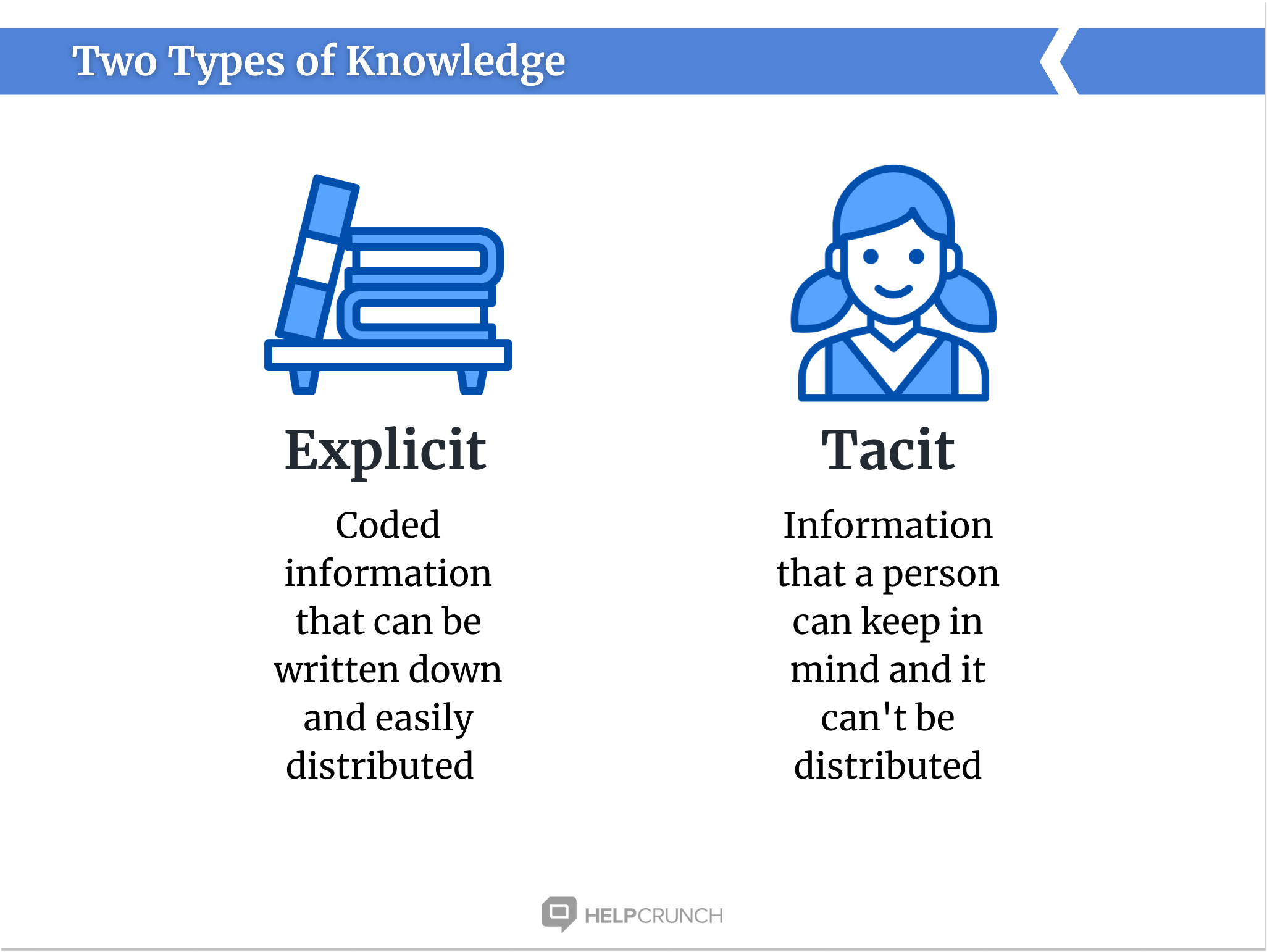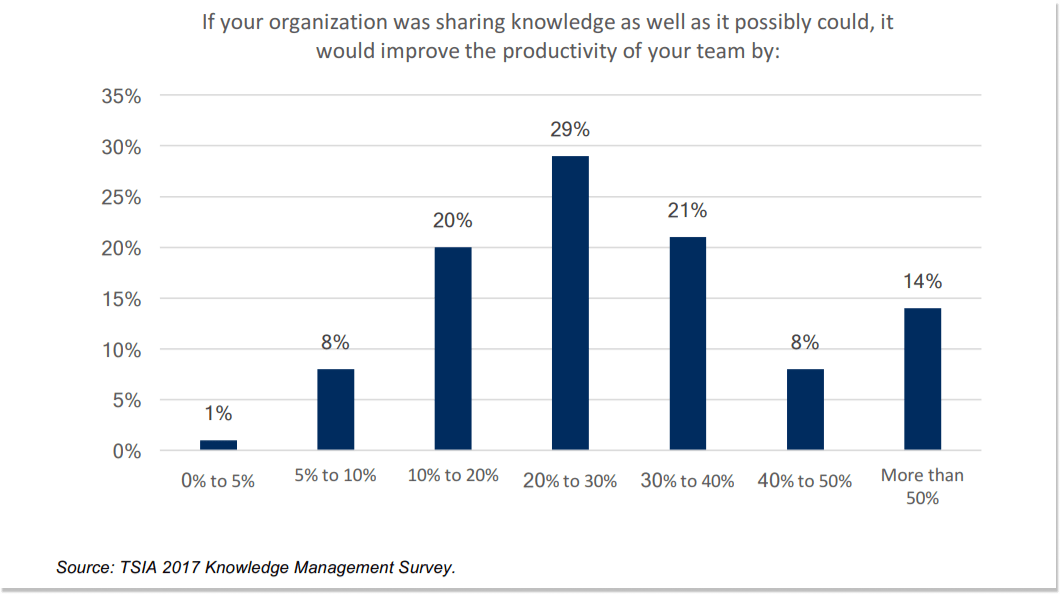Knowledge Management: Definition, Importance, and 5 Leading Processes
Knowledge management is what you need to create, share, and structure information properly. Find out 5 key processes and adopt them in your business right away.
Written by Olesia Melnichenko

Have you ever thought of knowledge as the basis of your company? Your team creates products and services thanks to the knowledge they have, you know the clients’ needs, so you can engage them and meet their demands properly, and all the internal company’s processes are driven by your staff’s knowledge of business operations.
However, the only fact that your team is well-versed in some special processes of your company may not be enough. At the end of the day, you want your business to function in the right manner. All the information you have should flow freely throughout your team and to your audience in order to come in handy.
Everyone knows this saying: knowledge is power. No matter what niche you’re working in and who your target audience is, the information you possess and deliver to customers should be structured and easy-to-digest. This is when knowledge management should be the number one priority for a business. So, where do we start?
What is knowledge management?
The knowledge management definition is not so intricate.
Knowledge management is the process of defining, creating, sharing, and structuring the information of an organization.
E-Commerce News
The purpose of knowledge management is to enhance the company’s efficiency and save knowledge to teach someone about something.
Broadly speaking, the goal of knowledge management in business is to enhance customer support team and staff capabilities, empower staff via FAQs and relevant articles, and enable any new AI technologies into the workflow. Besides, knowledge management is all about creating a sharing culture for both your staff and customers (you can actually think of it as of knowledge support, too).
To have a better idea of how knowledge management involves all of the above, we need to bring up the types of knowledge first:
- The knowledge that is not only accessible and easy to codify, but it also can be stored in a database, and shared with others is explicit knowledge. This group includes videos, memos, and other materials. For instance, a resource center you build on your website can be classified as explicit knowledge as the information presented is easily distributed.
- Tacit knowledge (aka tribal knowledge) is garnered from our personal experience and context. It can’t be transferred, written down, or presented in a tangible form. A vivid example here is a sales rep who can not only deliver a flawless demo to a client but also caught the buying behavior when speaking to prospects.

Why is knowledge management important?
Let’s elaborate on the importance of knowledge management. There are several reasons proving why this process is vital:
- It ensures all the relevant information and resources for employees anytime they need it (for instance, internal knowledge bases);
- It makes possible for the information to remain in a business even if an employee leaves a company;
- It avoids duplicate errors;
- It ensures a company to take a competitive advantage within the industry;
Moreover, knowledge management in business can help your company keep and structure explicit knowledge, grasp tacit knowledge and codify it into explicit knowledge, and make this knowledge easy to reach so that your business functions more efficiently.
To be specific, good knowledge management is a win-win for:
- Customers
To improve customer experience, a support team should always have access to a wide array of materials and make sure clients have it, too. Proper knowledge management activities give a perfect opportunity to keep customers informed and engaged via evergreen blog posts, FAQs, white papers, case studies, etc.
- Customer service agents
Support experts are great to talk to when gathering knowledge. First, they provide useful information from the frontlines of customer service. Secondly, support reps improve their customer service skills and can avail of new opportunities (for instance, translate a knowledge base article for international customers). Moreover, good knowledge management can help support agents with client onboarding, daily workflow, and even HR-related activities.
- Business
The silos of information can harm your staff’s productivity. I mean, when people can’t share information in a company, it can impact their ability to do their best work. Great knowledge management removes these silos and fills the gaps in corporate communication. To have a bird-eye-view, look at the graph below:

We’re getting closer to the most engaging part: knowledge management processes. Read on to find out what they are and adopt them in your business ASAP.
5 key knowledge management processes
The knowledge management processes we discuss here are more widely used in customer service. You’ll also see the questions next to each point: they are given to present you with a broader picture of what these processes stand for and what their essence is.
1. Identification
What knowledge can a company deliver to its customers?
An insightful knowledge management strategy is no guesswork. When you’re about to create a powerful help center for your customers, no detail should fall through the cracks. Map out what knowledge you want to deliver, consider the customer needs to be met through this knowledge, identify the information hierarchy, and make sure your team development is aligned with business goals and service agents’ personal interests.
Besides, you should determine what methods you will use to distribute the knowledge, get to know social media influencers within your industry and partner with them, explain organizational quirks to new hires, and go for community management.
2. Creation
How will knowledge inside an organization be created?
Every company is different, so the work on knowledge is different, too. In this step of the knowledge management process, such questions as what can be learned from the knowledge and if there are any areas that can be lost are identified. When you create a piece of content, always have a content plan to follow, do SEO research, master your writing, and use powerful tools. For instance, consider Canva for catchy designs or Anchor to make an interesting podcast to share.
On top of that, your team should keep track of the following metrics when creating content:
- Knowledge maintenance: this one shows the initiative of a customer support rep to monitor the health of the knowledge base.
- Knowledge use: this metric indicates the number of cases closed thanks to a knowledge base article. Plus, it demonstrates the number of searches for a topic covered in an article.
- Knowledge creation: this criterion measures the agent’s productivity in terms of articles written for the knowledge base.
- Knowledge quality: here you can see whether the knowledge base is usable, the received feedback is fine, and the satisfaction rate is high.
3. Maintenance
How will new and current knowledge be stored?
This is when building a knowledge base may be the right thing to do. By shaping a resource center that is well-thought-out, structured, and easy to navigate, knowledge is easily accessed and the organizational structure is increased.
We at HelpCrunch have developed an advanced knowledge base that helps our website’s visitors find the solution faster. Besides, it’s now integrated into our chat widget. A customer can search for the information by themselves without waiting for a customer support agent to reply.

4. Processing
How can knowledge (content) be incorporated and brought up to date?
This step of a knowledge management process is all about analyzing. That is, how all the information gathered in the previous two steps is processed. You should assess the knowledge you have and see how it can be best folded into your company’s structure.
Content is one of those indispensable parts of knowledge management. So, it’s crucial to always keep it up to date. Everything you put on your blog or website pages should be continually refreshed so that it chimes in with your users’ needs and expectations. If the content you create is not revamped:
- Customers won’t be able to find answers to their much-needed questions, this is what drives customer satisfaction and retention down.
- Agents can’t take advantage of relevant content, which is no good for handling times. Plus, if the content is out-of-date, a company can’t comply with the industry rules. We at HelpCrunch are constantly bringing our content up to date and getting some whooping results: new blog subscribers, more article views, and higher SERP positions.
5. Sharing and benefiting
How can your company share its knowledge with others?
The point of knowledge management is to enable easy access to knowledge across a company and customers. You can encourage your staff to share their knowledge and improve their expertise. For instance, various workshops, webinars, or even offline events will come in handy. Your team can model customer service scenarios and discuss tricky cases together to communicate problem-solving techniques.
On top of that, consider developing your staff knowledge sharing skills. Depending on a position, they can be as follows:
- Head of support/knowledge management: this person takes responsibility for operations and includes Vice President of customer service, Vice President of business operations, or Vice President of customer experience.
- Category owner: such an expert has flawless organizational skills.
- Knowledge editor: as you can guess, this expert has enough expertise in writing, editing, and realizes what content is targeted for customers best.
- Conversational designer: this is a customer-facing job, which requires an impeccable feel for natural conversations.
- Knowledge base administrator: it’s a technical position, where an employee should have enough skills to support a well-built knowledge base center.
Once these knowledge management processes are implemented, your business can benefit from increased efficiency, better decision making, and forward-thinking employees.
Bottom Line
Building a well-designed help center for both your business and customers takes time and effort. Your customer support team should not only know where this or that article is located but also take part in content creation.
Besides, you need to fine-tune your resource hub regularly so that clients make the most of it by themselves. Hopefully, these knowledge management processes will come in useful in your future endeavors.
Speaking of, you can create an account with HelpCrunch and start shaping your knowledge base center using an advanced feature set right away.





